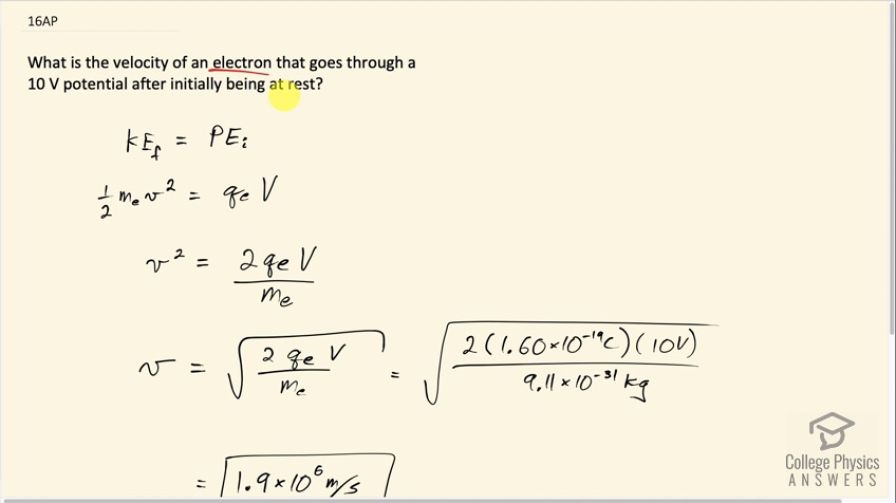Question
What is the velocity of an electron that goes through a 10 V potential after initially being at rest?
Final Answer
Solution video
OpenStax College Physics for AP® Courses, Chapter 19, Problem 16 (Test Prep for AP® Courses)

vote with a rating of
votes with an average rating of
.
Calculator Screenshots
Video Transcript
This is College Physics Answers with Shaun Dychko. An electron is accelerated through a potential of 10 volts after initially being at rest and what is the final velocity of the electron is the question? So in the end, it will have no potential energy and it will have only kinetic energy so its final kinetic energy will equal the energy it had initially, which was entirely potential energy due to the fact that at rest, it has no initial kinetic energy. So this is to say one-half times the mass of the electron times its speed squared equals its charge multiplied by its potential and we are told the potential is 10 volts and we can multiply both sides by 2 over mass and then we get v squared is 2 times charge times potential over mass and then square root both sides to solve for the speed. So that's square root of 2 times the elementary charge on an electron— 1.60 times 10 to the minus 19 coulombs— times 10 volts—potential— divided by the mass of an electron— 9.11 times 10 to the minus 31 kilograms— and that is 1.9 times 10 to the 6 meters per second.
